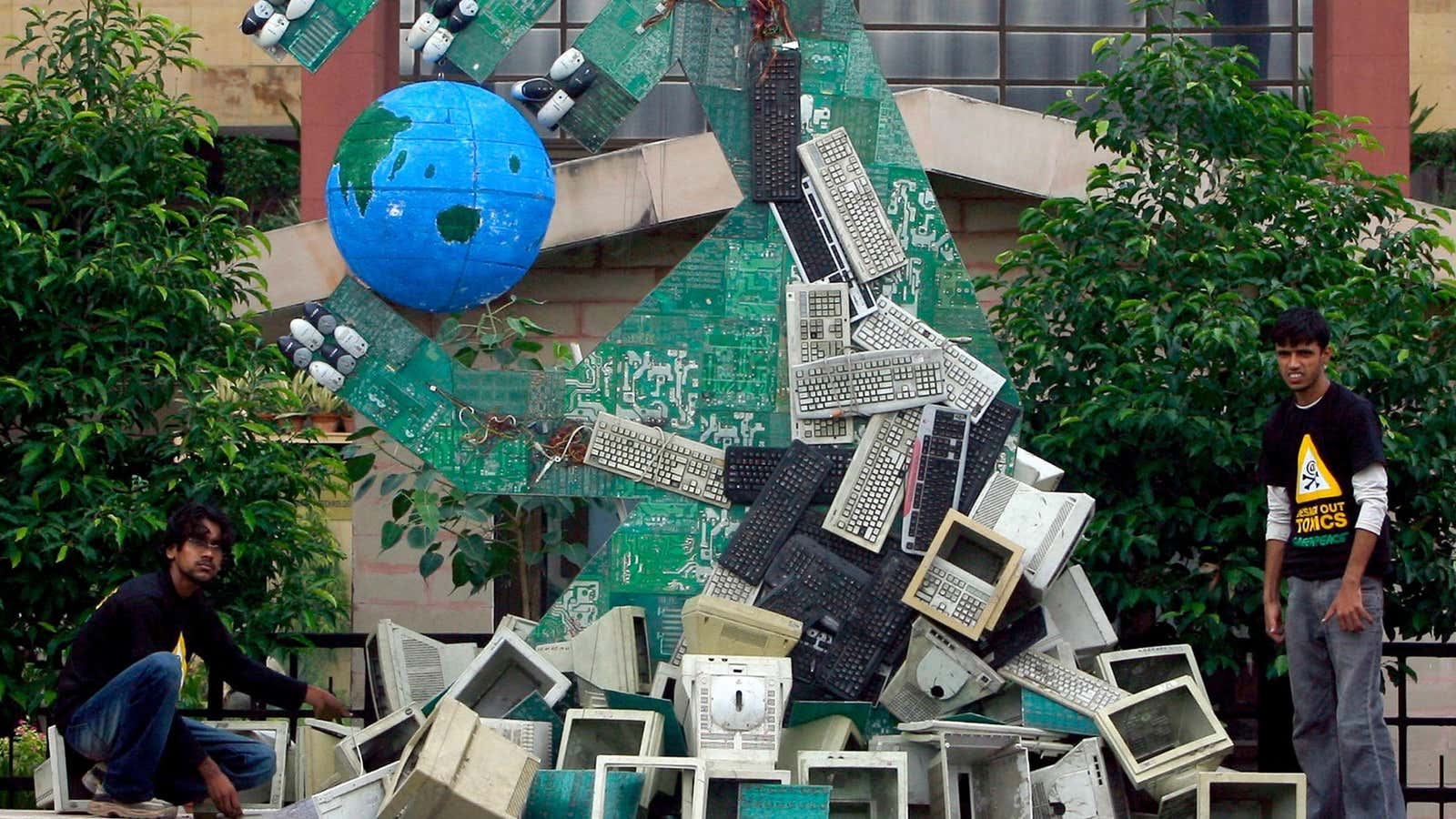India’s e-waste problem is spiraling out of control.
And the state churning out the maximum e-waste—a fifth of the country’s total—is Maharashtra, according to a joint study by trade association ASSOCHAM and IT firm NEC Technologies.
E-waste typically includes discarded computer monitors, motherboards, mobile phones and chargers, compact discs, headphones, television sets, air conditioners, and refrigerators.
India generates about 2.2 million tons of all these each year. By the end of 2018, the figure will touch 3.3 million tons, the study found.
The country has the capacity to process 482,906 tons of e-waste but poor infrastructure, legislation and framework holds it back, the study noted. A mere 5% of the country’s total e-waste gets formally recycled, the ASSOCHAM-NEC study said. The rest is dismantled and disposed of by the unorganised sector, mainly scrap dealers.
The dumping of hazardous e-waste, meanwhile, creates severe environmental issues as well as serious health hazards, including damage to the nervous system, respiratory disorders, skin diseases, bronchitis, and even lung cancer among workers who handle such waste manually.
Over the last few years, the government has finally begun making some e-waste management rules. Authorities are dedicating spaces for proper disposal, identifying authorised manufacturers and dealers who can take back used gadgets, and installing roadside e-waste drop boxes, too.
But e-waste generation isn’t slowing down anytime soon in India. The country’s electronics sector is projected to grow at a compound annual growth rate of 24% to $400 billion by 2020. Rural electrification is upping the demand for its products, as are rising incomes. In the world’s second-largest smartphone market, rising mobile phone usage is also a big culprit.




